Premium Only Content
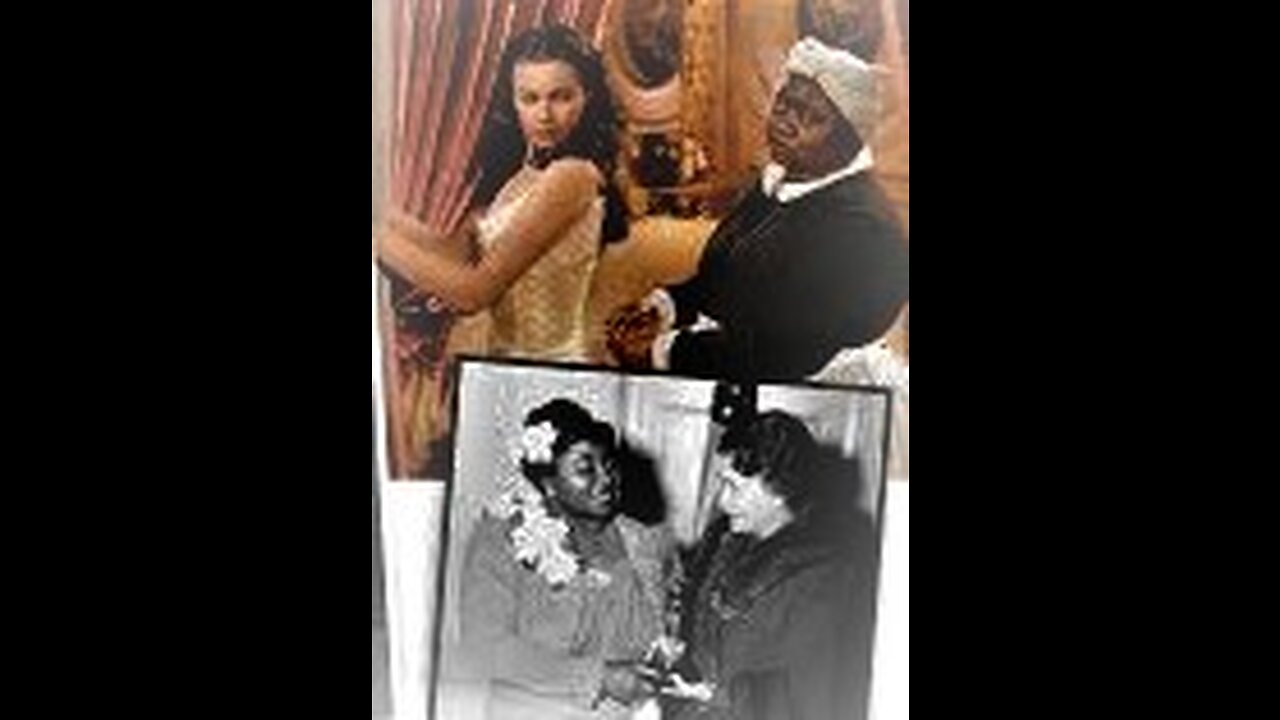
White Supremacy: Excellent Rhetoric, Brilliant Actors
An european couple points to a glass panel across the room. ‘There he is’, she says. The man squints and then walks over to it.
The panel contained an ancient Egyptian funerary stele of the Theban priest Ankh-f-n-Khonsu.
The front showed an image of the priest offering to the god Ra-Horakhty.
On the otherside was a short hieroglyphic text from Chapter 30 of the Book of the Dead.
The museum’s catalogue number was also printed at the top: 666.
For the man, this stele was the culmination of his first spiritual strivings and the source of all his later beliefs. This moment defined the shape of the rest of his life
My Gods were those of Egypt, interpreted on lines closely akin to those of Greece.
Aleister Crowley and his wife Rose made this visit to Egypt on their honeymoon in Spring 1904.
A period when Britain ruled Egypt through a ‘Veiled Protectorate” which began with a brutal naval bombardment on Alexandria that had killed many civilians in 1888.
This trip to Egypt was one of many that Crowley had undertaken.
The country was the midway point on the important imperial route between Britain and India, via the Mediterranean and Suez Canal.
The couple had planned to sail on to China. Indeed they had stopped in Cairo on the outward journey in November the previous year, where they visited the pyramids of Giza. Hoping to impress his beautiful new wife, Crowley arranged a night time visit to the central chamber of the grand pyramid where he read out a magic incantation. According to his own report, a strange light filled the chamber.
In India, Crowley enjoyed big game hunting. Just as they were to set off on the next leg of their journey from India to Sri Lanka, Rose discovered she was pregnant and the couple instead began their slow return to Britain via the Suez.
It was only by chance, the Crowleys found themselves back in Egypt that spring night.
***
The marriage had been an impetuous one.
Crowley met Rose through her brother Gerald, an artistic associate of his from Paris.
Gerald and his family were staying on holiday in Scotland close to Crowley’s own Scotch mansion, Boleskin.
Rose, a widow at 29, was tailing at least three men.
The first was an American, Howell, a friend of her brother’s, to whom she was engaged.
The second was a solicitor called Hill, who wanted to marry her.
And the third man, Frank Summers, was a married man, with whom she had an affair. Her family was pressuring her to marry to avoid scandal.
She had confided her worries to Aleister who thought about it a while and suggested they should get married instead.
It would be a front.
The two eloped to the nearby Scotch town of Dingwall where, by Scotch law, they could be legally married in front of the town lawyer without banns.
The original plan was to tell no one but they had a change of heart and told Gerald, who thought they were joking and carried on with his game of golf.
Realizing the next morning that they were not joking he tracked them to Dingwall and burst into the lawyers office, all a fret and fraying, to be the first of the family to greet the newly married couple.
Although he claimed it would be a show marriage only, Aleister found himself falling deeply in love with the beautiful and headstrong Rose.
When they discovered the ruse, Rose’s family were angry.
The couple hoped their long honeymoon halfway across the world would provide time to cool down tempers and heal wounds.
***
The first time Crowley had made the same journey the year before he wasn’t particularly interested in the antiquities, enjoying instead the city’s more worldly pleasures.
This time with Rose, he wanted to introduce to her the sights, show off his connections to the imperial administrators and prove his magical prowess.
He was also taught Arabic language and mysticism by an unnamed ‘Sheikh’.
He began calling Rose, W or Warda (the Arabic word for Rose).
On 16 March, he made the same incitation he made in the Great Pyramid the previous November to help Rose see astral beings.
This was unsuccessful, but Rose claimed to be inspired telling her husband ‘They’re waiting for you” and making statements about Osiris and “the child”.
On 18 March, Rose claimed to be channeling the voice of an emissary of the Egyptian god Horus. Rose had no previous knowledge of Egyptology.
Crowley interrogated her closely and she was able to answer his questions correctly.
And what ‘Horus’ had to impart was mind blowing…
A small silver statuette of Harpocrates found on the Thames bankside. He holds his hand to his mouth in a gesture believed by some to be a sign of silence.
Aleister Crowley was born on 12 October 1875 to Edward and Emily Crowley.
Both of his parents were strict Christians, members of the exclusive Plymouth Brethren. Crowley’s father inherited money from his family’s brewery company. The young family enjoyed a privileged life.
Crowley’s father was essentially a street preacher, albeit a well healed one living off astute investments.
An effective technique he developed was to stop people to ask where they were going. When they answered this initial question, he would follow up with “and then?”, not stopping the follow up questions until the person finally answered something along the lines of ‘Well, death” to which he would say “Then you’d better get right with God”. He’d record the person’s name and address in his book and send them a steady stream of pamphlets.
Aleister’s connections to his family were "complex"
His father died when he was 11 and Aleister was sent to a series of boarding schools noted more for their cruelty than their educational abilities.
His mother also moved house to live with her brother Thomas Bond Bishop, an evangelical Christian (although not a member of the Brethren) and a founder of the Children’s Special Service Mission.
Crowley had a difficult adolescence and was to reject his family’s strict christianity.
Yet he arguably inherited their search for religious certainty and followed his own sense of faith. He also retained a love for the Jacobean prose style of the King James Version of the Holy Bible.
***
It was nevertheless with a relief that he left the family home and moved to Cambridge University, with access to £50,000. “As he would describe one of his own students many years later”, Kaczynski writes “he was free, white, and twenty” (32).
He threw himself with a gusto into his interests of poetry, chess and mountain climbing. He also lived a nocturnal life, beginning his studies at midnight so as not to be interrupted. He began reading contemporary and classic poetry including Browning, Swinbourne, Shakespeare, Gibbon and Burton. His favorite was Shelley. At university, he began collecting books and wearing the poet’s uniform of floppy hat and bow tie.
His first poetic works were published in student periodicals. His poetry bore the mark of its time, the heady sweet incense of the fin de siecle.
“He who seduced me first I could not forget.
I hardly loved him but desired to taste
A new strong sin”.
At Cambridge he fell in love with Jerome Pollitt, a female impersonator in Footlights, and supporter of Aubrey Beardsley. (On his deathbed, Beardsley implored Pollitt to destroy his copies of Beardely’s Lysistrata). This was an important relationship for Crowley. “I lived with Pollit as his wife for some six months and he made a poet out of me”.
Crowley was also a very able chess player. Then, as now, chess is seen as shorthand for intellectual prowess. There is also something of the power of rules. He was dismayed to see the world chess masters on a visit to a German chess championship and dedicated that while chess would remain a passion, it would not be his vocation. Towards the end of his life, he advised his young son to take up the sport: “for one thing it is a very good training for the mind, and for another is is the only game of all the games worth playing, which lasts you throughout your life”.
Crowley had begun mountain climbing before Cambridgge. An early achievement in 1894 was ascending Beachy Head, a chalky cliff face near Eastbourne on England’s South Coast, as well as several mountains in the Alps the following year. He would go on to make several ascents of mountains in the Himalayas.
***
In March 1898, he read AE Waite’s The Book of Black magic and of Pacts. He was intrigued by a reference to a school of experts who possess ‘a science of the old sanctuaries’. He wrote to Waite asking for more information. Waite advised him to read The Cloud Upon the Sanctuary, a German work published in 1802 and recently translated into English (1896). This book was fundamental and claimed that a group of ‘master’s held onto a secret teaching.
In March 1898, he read AE Waite’s The Book of Black magic and of Pacts. He was intrigued by a reference to a school of experts who possess ‘a science of the old sanctuaries’. He wrote to Waite asking for more information. Waite advised him to read The Cloud Upon the Sanctuary, a German work published in 1802 and recently translated into English (1896). This book was fundamental and claimed that a group of ‘master’s held onto a secret teaching.
Crowley read it at an critical time in his life as his relationship with Pollit was breaking down. Pollit was also not keen on his growing interest in occultism. He was also meeting people interested in magic and the occult through mountain climbing . One of his most influential encounters happened in a Beer Hall , when he bumped into Julian Baker, a chemist and amateur alchemist. They began chatting and Crowley asked if he was a master? Baker said no, but promised to introduce him to a friend, Geroge Cecil Jones, who was a master, when they had both returned to England. Crowley learnt more about magic under their tutelage and they introduced the young man to The Hermetic Order of the Golden Dawn.
The Golden Dawn was created in London 1888 by Dr William Wynn Westcott, William Robert Woodman and Samuel Liddel MacGregor Mathers. Mathers was a professional occultist sponsored by Annie Horniman (of the eponymous museum family). The group’s founding myth was based on a manuscript discovered by Westcott in the Farringdon Road book market, which may have been written by Kenneth Mackenzie, a victorian expert on Masonry and the occult. It contained rituals written in a cipher.
Mathers was asked to flesh out the detail. The manuscript also had the name of a German adept, who was contactable and gave authority to the three men to establish a temple (‘Isis-Urania No. 3). Whatever the truth of this tale, the Golden Dawn was important, acting as a ‘church and university”, in Yeat’s words, to many people interested in the occult at the time.
Crowley joined the Golden Dawn on 18 November 1898, a date he would mark throughout his life.
Aleister Crowley as Magus in front of a replica of the Stele of Revealing (No. 666 in the Museum catalogue) c. 1913 (Public Domain via Wikimedia)
The entity that Rose Crowley claimed to channel was called Aiwass.
Aiwass commanded the couple to turn their flat in Cairo into a temple. Crowley was to enter the temple at noon on three days (8-10 April 1904) and write down what he heard. Rose was no longer needed as a medium.
Aleister heard Aiwass’ voice coming from behind him as he wrote. He never saw him, but had a vision of him within his own mind, describing him as:
“a body of ‘fine matter,’ or astral matter, transparent as a veil of gauze or a cloud of incense-smoke. He seemed to be a tall, dark man in his thirties, well-knit, active and strong, with the face of a savage king, and eyes veiled lest their gaze should destroy what they saw”.
Sutin, 123
Arguably, Crowley’s description resembles Shelley’s description of Ozymandias “whose frown, And wrinkled lip, and sneer of cold command” remain half sunk in the sand.
Aiwass wore Assyrian or Persian clothing. In 1904, Crowley saw Aiwass as his patron angel, but he struggled to fully explain who he was.
In the late 1910s, Crowley was introduced to the Yezidi religion. At the time, there was a scholarly debate on the origin of this sect. Some scholars argued that they dated from early Mesopotamia and worshiped a devil. It is important to note that Yezidis not only deny this but also forbid the word ‘Satan’ in connection with their deity. Sadly, the religion has suffered much persecution including under Daesh in 2014.
Crowley revised the identity of Aiwass several times in his life. The first recorded description calls him ‘the minister of Hoor-Paar-Kraat’ – the Lord of Silence, or Harpocrates.
The text that Crowley transliterated was the first three chapters of the Book of the Law. Each chapter was written in the voice of an Egyptian god.
In chapter 1, the goddess Nut calls Crowley her prophet, the beast (a name his mother gave him). The new rule of this new age is ‘Do what thou wilt shall be the whole of the law’ (perhaps also inspired by Rabelais and Nietzsche). The law is for all, but constrained by ‘love’: “Love is the law, lover under will”.
In chapter 2, Hadit (a solar form of Horus) calls people to follow the new law.
In chapter 3, Ra-Hoor-Kuit (‘Horus of the two horizons’) calls for destruction “Sacrifice cattle, little and big; after a child”. Crowley’s friend Gerald Yorke said that this passage horrified Crowley who never took it literally. ‘Child’ was understood as a cipher for semen.
Crowley believed that Aiwass had announced the end of the Aeon of Osiris and the beginning of the Aeon of Horus. There was a strong scholarly reading that understood Osiris as a dying god, similar to Jesus. Horus’ conception and birth was a result of the death of his father Osiris. The Age of the Dying Gods was one focused on sin and mortality.
In the new age, humanity would identify their inner divinity. Sutin writes:
The transformation from Old Aeon to New must be total. Fire, blood, and blasphemy are prominent amongst the birth pangs.
Sutin, 130
The links with the Golden Dawn and Theosophism are clear. Crowley saw this revelation as calling for the end of the Golden Dawn and the formation of a new one the A:.A:. (Argenteum Astrum or Silver Star).
***
Over the next few years, the group grew to around 80 members. Crowley may have been disappointed by how serious the members took it. He regretted letting the Probationers and higher grades mix socially. Yet he made some important connections in these early days of the A:.A:. including Victor Neuburg, who became his partner in magic and in love.
Crowley was encouraged to take the groups’ rituals and turn them into a magical piece of performance art.
Over seven consecutive Wednesdays in October and November 1910, the group performed the Rites of Eleusis at London’s Caxton Hall. Each week was dedicated to a planet. The audience were encouraged to dress in the planetary color: black for Saturn, red for Mars, violet for Jupiter.
Crowley understood the central part of the ancient Rites of Eleusis as a divine marriage and perhaps some form of ritualised sexual act. He hoped his own rites would unite audiences in a spiritual ecstasy.
Phil Baker has likened the event to the happenings of the 1960s. Performances contained music, poetry, dance and ritual and were helped with a little peyote in the libation cup. (Accounts of this vary).
Crowley hoped to raise money and increase membership of the A:.A:. but this did not happen. Instead he gained bad press. One journalist who was kissed by someone with a mustache was furious, that he had enjoyed it so much. The Looking Glass repeated rumours that Crowley was gay. Crowley was encouraged to sue but did not, something that may have affected future legal cases.
The more mature Aleister Crowley (Public Domain via Wikimedia)
Many people then and now have called Crowley a fraud, but it is clear from reading his diaries and books that his was a genuine search for spiritual enlightenment.
Richard Kaczynski, one of the biographers most sympathetic to Crowley’s religious beliefs, argues that he integrated various traditions. He describes a booklist Crowley produced for new followers.
“It covers classics of Hinduism (Upanishads, Bhagavad-Gita, Hathayoga Pradipika), Buddhism (Dhammapada), Taoism (Tao Teh King), gnosticism (Pistis Sophia, The Divine Pymander), Zoroastrianism (The Oracles of Zoroaster), Pythagoreanism (The Golden Verses of Pythagoras), Christian mysticism (The Spiritual Guide of Molinos), Jewish mysticism (Kabbala Denudata), alchemy (Scrutinium Chymicum), mythology (The Golden Ass), psychology (Varieties of Religious Experience), and anthropology (The Golden Bough)” as well as George Bishop Berkeley, David Hume and Immanuel Kant.
Kaczynski 559
He was studying magic at an important time for the rebirth of western occultism. This ’movement’, if we can use a term for such a broad range of items, took in things including Eastern spiritualism and both traditional and more contemporary forms of Western occult religions.
Frances Yates has argued that traditional Western occultism consisted of two main threads: Hermetica and Kabbalah. Hermeticism had Greco-Hellenstic roots while Kabbalah had Jewish roots. Crowley was a polymath in all areas of occult knowledge and had a deep knowledge of Kabbalah in particular.
Theosophy, founded a month before Crowley’s birth, was clearly another important in-road to his beliefs. It claimed to combine several magical and religious traditions, and aimed to heal the rift between science and religion. The founder Madam Blavatsky claimed that Tibetan ‘Mahatmas’ were watching over humankind to lead it into a new age.
The lack of Theosophical books in the list above is intentional. Crowley called Annie Besant, Madam Blavatsky’s successor “Totally devoid of all spiritual greatness, as of moral decency”. (Kaczynski, 424)
Several important figures were attracted to Theosophy including WB Yeats, who would himself be associated with Crowley in the Golden Dawn.
***
Perhaps one of the more complex aspects of Crowley’s life and writings were his connections to Eastern spiritual traditions which were bound up in his own relationship to imperial power structures. He was in a position that allowed him to both afford and be able to freely travel between different regions of the world.
This is perhaps most stark in his connections to India, which he traveled to regularly.
While his knowledge of Indian spiritual traditions were deep, he did not always live up to the moral precepts.
He would be physically violent to the team of mountaineers on his expeditions and on one occasion refused to help rescue another group.
He dismayed his friend Allan Bennett on a trip to Sri Lanka in 1902 by following a trip to the Dumbulla caves with big game hunting. Bennett, who had been Crowley’s first teacher in the occult, was in the region with Crowley on his way to join the Buddhist monastery to Lamma Sayadaw Kyoung. Around this time, Crowley began to turn away from Buddhism and yoga.
Nevertheless during the trip, Crowley visited the Meenakshi Temple to see the sacred Shivalignam (the divine penis of Shiva, destroyer and creator) which had a profound effect on him. Churton argues that this duality became part of Crowley’s philosophy of ‘life-acceptance’ (Churton, 79).
Yet Crowley never displayed the casual racism of most British people. He was also a fan of Indian and Chinese cuisine, concocting his own recipes (recorded in his diaries):
My almond Chicken. Steep cold chicken in red & green (or bird’s eye) chillis. Add Bamboo Pickle (in oil), Col. Skinner’s Chutney, & lots of almonds. Stew it all up. Oh boy!
Baker, 141
***
For Crowley, the main ritual of his magic was the sexual act. His diaries record the ‘works’ (sometimes referred to by the latin word opus). He had a large appetite for sex: hetrosexual, homosexual and onanistic.
Crowley never took himself too seriously. He began using epithets in his diaries for his female lovers in America. Jeanne Robert Foster and Helen Hollis, two women he was seeing at the same time, were given the names ‘The Cat’ and ‘The Snake’. The names reference the Egyptian gods Pasht and Apophis. While another American lover, Anna Catherine Miller, was given the name ‘The Dog’ after her ‘physical and magical correspondence to Anubis’ (Sutin, 264). These names are not meant to be offensive, but correspond to the women’s role in his magic rituals. Sutin argues that ‘The Dog’ might refer to Miller’s role as a ‘guide through the perils of dying to oneself that accompanied the magus grade’.
After a profligate youth, Crowley had many money problems and was always looking for ways to raise funds. One idea in 1929 was to create a perfume called ‘It’, a ‘universal sex appeal perfume’ the secret ingredients of which would be Crowley’s own powerful secretions.
It did not take off.
***
Egypt had long been held as a location of authority in Western occultism and had long been an abiding interest for Crowley. The Egyptian gods were clearly on his mind in the years leading up to his honeymoon sojourn in Egypt.While stating in Mexico in 1900, he wrote a free verse play Tannenhauser whose final words belong to Isis:
‘Isis am I, and from my life are fed
All stars and suns, all moons that wax and wane,
Create and uncreate, living and dead,
The mystery of pain.
I am the mother, I the silent Sea,
The Earth, its travail, its fertility.
Life, death, love, hatred, light, darkness,
Return to me –
To me!
Churton, 68
The lines resemble the aretologies (praise hymns) of Isis recorded across the Mediterranean and in Diodorus Siculus’ Histories and Apuleius’ Golden Ass. It is notable that Isis is associated with motherhood and the seas – two important attributes of the goddess in the Roman period but not necessarily in Pharaonic Egypt.
The end also resembles the areatalogy found at Kyme:
I overcome Fate.
Fate hearkens to me.
Hail, O Egypt, that nourished me!
Kyme Aretalogy
Crowley brings his own interests and thought processes to the poem. Here Isis is at the center of the cycle of birth and death, pain is an important part of the reality as well as opposites.
Crowley wrote many poems during his early years: it might be fair to say his editorial skills did not keep up with his creative ones. Several were linked to religious themes including Soul of Osiris published in 1901, but perhaps his most risque was Amphora. Crowley wrote it in 1907 on a trip to Spain. The subject was the goddess Isis, but he intentionally wrote it to be read as an allegorical poem about the Virgin Mary. It was published by a Catholic press in 1909.
This perhaps reveals an important point in that Crowley understood the Egyptian gods as linked to other deities.
In 1903, he wrote a note in his diary outlining his beliefs up to that point:
My Gods were those of Egypt, interpreted on lines closely akin to those of Greece.
In Philosophy I was a Realist of the Qabalistic School.
In 1900 I left England for Mexico, and later the Far East, Ceylon, India, Baltistan, Egypt and France. Idle here to detail the corresponding progress of my thought. Passing through a stage of Hinduism, I had discarded all Deities as unimportant and in Philosophy was an uncompromising nominalist [words are only words and do not necessarily denote realities]. I may call myself an orthodox Buddhist.
With the reservations:
(i). I cannot deny that certain phenomena do accompany the use of certain rituals. I only deny the usefulness of such methods to the White Adept.
(ii). Hindu methods of meditation are possibly useful to the beginner and should not therefore be discarded at once (necessarily).
[…] [I] appear in the character of an Inquirer on strictly scientific lines.
This is unhappily calculated to damp enthusiasm: but as I so carefully of old, for the magical path, excluded all from my life all other interests, that life has now no particular meaning, and the Path of Research, on the only lines I can now approve of, remains the one Path possible for me to tread.!
Churton, 87
This shows someone deeply thinking about their place in the universe and their beliefs.
Returning to the italicized lines ‘My Gods were those of Egypt, interpreted on lines closely akin to those of Greece’, perhaps we see in Egypt, via Greek authors, a source for Crowley’s belief in the potency of sex magic. Herodotus describes a Bubastis festival which involved women on a boat exposing their genitalia (Herodotus 2. 60).
Most shockingly Crowley read of an account of bestiality in Herodotus and attempted it between a goat and his partner at the time.
This was a woeful misreading of Herodotus.
In the passage, Herodotus is describing the Egyptians’ relationships to animals (as he understood it). He said that goats were never sacrificed in Egypt and were revered in particular in the Mendesian region, where they were linked with Mendes or Pan. He goes on to say:
In my lifetime a monstrous thing happened in this province, a woman having open intercourse with a he-goat.
Herodotus, 2.46
In the end, the goat was an unwilling participant and so Crowley took its role in the ritual. The bathos of the incident is clear – Crowley wrote in his diary ‘I atoned for the young He-goat at considerable length’ – but it nevertheless reveals a more complex side of his sexuality and treatment of other beings.
We might argue then, that his knowledge of ancient Egyptian religion was not as deep as his understanding of other religions.
Nevertheless, he drew on Egypt throughout his career.
His first daughter born in 1902 was named Nuit Ma Ahathoor Hecate Sappho Jezebel Lilith and his third daughter was named Isabella Isis Selene Hecate Artemis Diana Hera Jane, nicknamed Mimi. Strong female deities.
In the Liber Resh he also created a series of ritual recitations. In the morning adherents would praise Ra at sunrise, Hathor at noon, Tum at sunset and Khepri at midnight.
In 1936, when Crowley republished the Book of the Law in the second edition of The Equinox of the Gods, he felt it needed a suitable ceremony so he gathered representatives of the different peoples of the world via a long pub crawl around London’s Soho. All five of them collected in front of Cleopatra’s Needle and as the sun rose Crowley made a speech:
“I, Ankh-f-n-Khonsu, the Priest of Princes, present you, as a representative of your race, with The Book of the Law. It is the charter of universal freedom for every man and woman in the world”
Sphinx by ‘Cleopatra’s Needle’ in London
Crowley still has a bad reputation.
This is partly due to his own myth making. He called himself the ‘Great Beast’ and ‘666’. Although he argued these referred to the sun and not to the devil, the arguments are quite arcane and not easy for the majority of people to follow.
Yet perhaps the worst thing he did was to gain the enmity of Horatio Bottomley, a corrupt Liberal MP and the Editor of John Bull, a tabloid newspaper.
The paper had first turned on Crowley for his actions in the First World War. He had sailed to America and wrote articles attacking Britain for a German friendly newspaper. In one memorable article he reported the results of an air raid on London:
“A great deal of damage was done at Croydon, especially at its suburb Addiscombe, where my aunt lives. Unfortunately her house was not hit… Count Zeppelin is respectfully requested to try again. The exact address is Eton Lodge, Outram Road”.
Baker, 108
There has been much speculation about whether Crowley was acting as a secret agent for the British Government, initiating a form of ‘pyschops’ to shift American public opinion towards joining the war on the British side. Richard Spence has revealed lots of circumstantial evidence in support of this argument, but we may never fully know. The salient fact is that on the day that America declared war on Germany, Crowley wrote in his diary ‘My 2 ¼ years’ work crowned with success; U.S.A. breaks off relations with Germany’.
He was also allowed to re-enter Britain after the war, and ironically, spent his first Christmas with family at Eton Lodge, which fortunately Herr Zeppelin had failed to hit.
Another bad incident was the tragic death of Raoul Loveday, a young disciple, in the Abbey of Thelema in Sicily in 1923 from infected water. Betty May, the man’s widow in despair was offered £80 by the Sunday Express for an account of what happened. She claimed that Crowley had made Roaul sacrifice a cat and drink its blood.
It caused a sensation, one that John Bull was only two happy to capitalize on. In the following weeks they published a slew of headlines including the infamous “The Wickedest Man in the World”.
Crowley was unable to sue the publications at the time, but later sought to sue the artist Nina Hamnett, a friend of both Betty May and Crowley, for referencing the stories in her own autobiography. She has written:
Crowley had a temple in Cefalu in Sicily. He was supposed to practise Black Magic there, and one day a baby was said to have disappeared mysteriously. There was also a goat there. This all pointed to Black Magic, so people said, and the inhabitants of the village were frightened of him.
Kaczynski, 462
Crowley lost the court case and since then he has always been associated with tales of human and animal sacrifices. This is summed up most neatly by the fact that one account of Crowley sacrificing his own son MacAlesiter in Paris from a novel by Dennis Wheatley is still sometimes repeated as fact.
Yet for all that, he is a fascinating individual and an important figure for the insight he affords us to the world views and mentalities of the period.
We might perhaps sum up Crowley’s life with a list of personal achievements – scholar of occult practices, poet, chess player and mountain climber – but it is perhaps better to consider his life as a focus on the will and self-fulfillment, which are supremely contemporary values.
Certainly many people focus on the negative aspects of this. Crowley was not always a good partner. Yet nowhere is this more positive than his support of Oscar Wilde. When we consider that Crowley was a young man during the public fall of Wilde, it is most startling that he was never totally discrete about his own sexuality. In the early years of the Twentieth century, he was one of the few public supporters of Wilde. He also pushed the literature of the age with frankly homosexual poetry (to his own loss).
I would argue that much of the fear, distaste and also interest that Aleister still arouses is a result of his reaction against the heteronormative social mores of Victorian and contemporary society. There is much to criticize him for, but much that needs reappraisal and more wider study.
This post is just the start and I encourage everyone to discover Crowley the Magician, the bisexual poet and showman and lover of Egypt.
Crowley in golden Dawn garb, 1910 (Public Domain via Wikimedia)
Further reading
Phil Baker, City of the Beast: The London of Alisteir Crowley
Tobias Churton, Aleister Crowley: The Biography
Alisteir Crowley, Portable Darkness: An Aleister Crowley Reader (edited by Scott Michaelsen)
Richard Kaczynski, Perdurabo: The Life of Aleister Crowley
Richard Kaczynski, The Weiser Concise Guide to Aleister Crowley
Lawrence Sutin, Do what thou wilt: a life of Aleister Crowley
https://rhakotis.com/2022/12/01/aleister-crowley-and-ancient-egypt/
THE ORIGIN OF THE SATANIC CULT IS IN SWITZERLAND and CROWLEY IMPORTED THE DEATH CULT INTO AMERICA and all over the WORLD
-
JFK Assassination: Swiss Conspiracy with FBI Hoover (Huber) Octogon Group killed John F.Kennedy
-->>
https://rumble.com/v229dg2-jfk-assassination-swiss-conspiracy-with-fbi-hoover-huber-octogon-group-kill.html
-
LUCIFERISM / SATANISM - THE LION KING & THE FALSE LIGHT EXPOSED
--->>>
https://rumble.com/v24z9j0-luciferism-satanism-the-lion-king-and-the-false-light-exposed.html
-
Many thanks To Sean Hross for his years of enlightening coverage and insight into the Pharaonic Masters - Octogon group - Free Mason - Night Templar and all Puppets to date.
-
This video opens up in 7:59.56 evidence about the Pharaonic Masters. They have a legal mafia like the police, politicians, justice department, banks and government agencies, and they have an illegal mafia to do things, their legal mafia can't get by without causing too much distrust which makes the slaves distrust the system; their legal mafia is run by the Freemasons while their illegal mafia is from the Knights Templar with their main base Switzerland high up in the strategic Alps. In reality, their legal mafia and their illegal mafia work together as the two hands of the same body.
Sean Hross
-
Octogon - the empire of the darkness
-
- The Octogon Group: an ultra-secret globalist network based in 🇨🇭Switzerland🇨🇭, consisting of powerful Catholic and Jewish families whose lineage dates back to the Egyptian Pharaohs. It is the wealthiest, deadliest and most technologically advanced mafia in the world with hundreds of front organizations. Their various insignias contain 8 points, sides or elements.
#BABYLONFALL
#CERN #VATICAN #CIA
-
CHECK PDF & DETAILS
—>>>
https://t.me/EXPOSEthePEDOSendOfTheCABAL/3564
-
Counterpart -
the GOLDEN CUBE also known as WHITE DRAGON SOCIETY
—>>
https://t.me/EXPOSEthePEDOSendOfTheCABAL/3552
-
- Octogon group is in the process of being dismantled by a global revolution involving populist insurgencies, covert military operations turncoats within the Octogon ranks who have seen the writing on the wall; That the cult of the dead will ultimately lead to self-destruction.
-
🇫🇷Mysterious old Medieval House from the Dark Middle Ages with Secret Chambers
-->>
https://rumble.com/v1lpkzx-mysterious-old-medieval-house-from-the-dark-middle-ages-with-secret-chamber.html
-
Bow & Kneel before Demonic Baphomet at Knight's Cathedral in Authentic Templar's Castle in Spain
-->>
https://rumble.com/v1l4acd-bow-and-kneel-before-demonic-baphomet-at-knights-cathedral-in-authentic-tem.html
-
- THE REAL HISTORY OF THE ASSASSIN'S CREED WITHIN ISLAM &
THE OCCULT PART 1
-->>
https://rumble.com/v1q5495--the-real-history-of-the-assassins-creed-within-islam-and-the-occult-part-1.html
-
THE KNIGHTS TEMPLAR PART 2
-->>
https://rumble.com/v1q55wl-the-knights-templar-part-2.html
-
- MYSTERIES OF THE KNIGHTS TEMPLAR | SATAN & THE HASHASHIN ASSASSINS PART 3 -
-->>
https://rumble.com/v1q57fl--mysteries-of-the-knights-templar-satan-and-the-hashashin-assassins-part-3-.html
-
-
WATCH the DOKUS BELOW and CONNECT THE DOTS to get a better UNDERSTANDING of THE BIG PICTURE
(more Links to topic connected videos in the Rumble BOXES
--->>>
🔥 THE SECRET HISTORY OF THE KHAZARIAN MAFIA —
HOW ZIONISTS INFILTRATED THE WORLD
-
https://rumble.com/v25m8hd--the-secret-story-of-the-khazarian-mafia-how-zionists-infiltrated-the-world.html
-
 12:15
12:15
Nikko Ortiz
18 hours agoMonday Gun Fails
61.2K12 -
 8:19
8:19
MattMorseTV
17 hours ago $10.85 earnedTrump is ACTUALLY DOING IT.
61.2K51 -
 5:40
5:40
Sugar Spun Run
1 day ago $0.78 earnedNutella Brownies
9.66K1 -
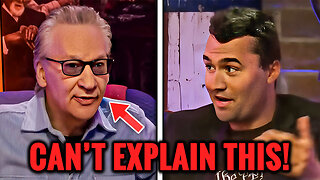 8:46
8:46
Faith Frontline
16 hours agoBill Maher STUNNED as Charlie Kirk Proves God Exists
10.3K10 -
 LIVE
LIVE
FyrBorne
10 hours ago🔴Warzone M&K Sniping: On the Hunt For The Next Fun Builds
112 watching -
 7:11
7:11
MudandMunitions
13 hours agoNY Legal, Still LETHAL! Colt M4 + Griffin Armament GPS3X Prism Sight! NIGHT SHOOT
8.58K3 -
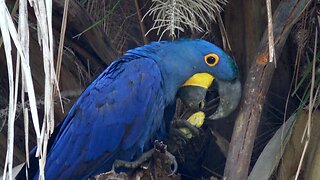 2:11
2:11
WildCreatures
2 days ago $0.61 earnedBrilliant Blue Hyacinth Macaw Eats Nuts With Impressive Dexterity
8.74K5 -
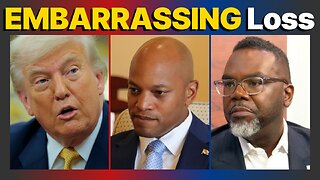 29:45
29:45
DeVory Darkins
16 hours ago $5.83 earnedDemocrat Governor suffers EMBARRASSING LOSS to Trump as ICE takes Garcia into custody
16.7K61 -
 24:50
24:50
Bitcoin.com
16 hours agoEthereum hit an ATH this weekend | The Weekly Recap for Aug 25
12.7K -
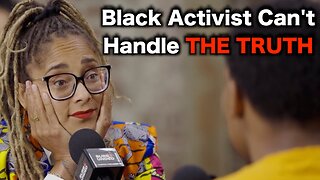 56:27
56:27
Actual Justice Warrior
16 hours agoAnti-White Celebrity DESTROYED On Jubilee
13.3K12